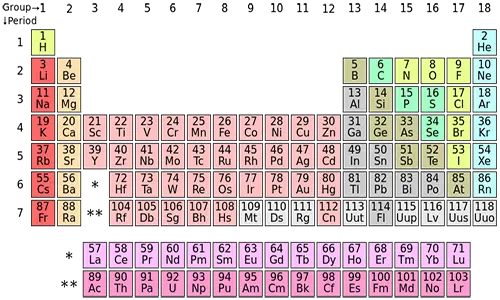Since the early Neanderthal days, man has found a use for almost every material that exists on the planet’s surface. Depending on its strength and availability, various applications were discovered for every existing element.
While the initial uses of nonmetals were limited to spears and tools, the evolved man put his knowledge to excellence and brought about various discoveries that have crossed all previous bars of expectations.
Today, however, situations have changed. Nonmetals like diamond happen to be a woman’s (and man’s) best friend and at the same time are used to cut other tools.
This article further elucidates on the facts about nonmetals.
1. What are they?
Non metals are defined as elements whose properties differ from that of metals. Their physical and chemical properties are extremely random in contrast to the consistent properties maintained by those elements classified as metals.
2. Examples of nonmetals.
Non metals include elements present in Groups 14, 15, 16, 17 and 18 of the periodic table. The list of all non metals includes:
Group 14- Carbon
Group 15- Nitrogen, Phosphorus.
Group 16- Oxygen, Sulphur, Selenium.
Group 17- Fluorine, Chlorine, Bromine, Iodine.
Group 18- Helium, Neon, Argon, Krypton, Xenon, Radon, Ununoctium.
Hydrogen is also included in the list of non metals.
3. Where are they found?
Nonmetals are widely present in the earth’s crust and atmosphere. All oceans and water bodies have an abundance of these elements. Most nonmetals can’t exist in the elemental form and thus exist as compounds. On the other hand, nonmetals like Hydrogen, Carbon, Nitrogen, Oxygen, Sulphur and the Noble gases are present in their elemental form itself, especially in the atmosphere.
4. Classification of nonmetals.
Nonmetals are generally classified into three categories depending on the grouping of elements in the periodic table. The group 18 Elements are called ‘Noble gases’, Group 17 elements, ‘Halogens’, and the rest of them are called orphan elements.
Noble gases: These include He, Ne, Ar, Kr, Xe, Rn, UUo. Noble gases have a completely filled electronic configuration and are thus the least reactive of all elements in the periodic table.
Halogens: These include F, Cl, Br and I. Halogens require one electron to attain completely filled electronic configuration and are thus highly electronegative.
Orphan Elements: These include C, N, P, O, S, Se. Orphan elements are those that cannot be categorized based on their general properties.
5. Chemical properties of nonmetals.
The chemical properties of nonmetals are responsible for their reaction with other elements. The chemical properties of nonmetals are as follows:
• Nonmetals are highly electronegative in nature. They thus form compounds very easily.
• Nonmetals gain electrons when combined with other elements thus oxidizing them.
6. Physical properties of nonmetals.
Physical properties of nonmetals determine the appearance of elements. The physical properties of nonmetals are as follows:
• Nonmetals are brittle and ductile.
• Unlike metals, they are transparent and do not possess the quality of metallic lusture.
7. Uses of nonmetals.
Nonmetals have been widely used in various applications in today’s world. Every compound of nonmetal has its own unique value addition factor. Nonmetals such as chlorine are used as disinfectants. Iodine finds its use in various drugs and antiseptics. Nonmetals may also be used as biomaterials in the human body to mimic the function of natural organs.
8. Are nonmetals present in the human body?
The human body consists of nonmetals in abundance. Water itself is a compound of 2 elemental nonmetals, hydrogen and oxygen and constitutes 75% of the body. Carbon, nitrogen and phosphorus are a few other widely present nonmetals in the body.
9. Electro negativity of nonmetals.
Nonmetals have an almost completely filled electronic configuration. In order to attain completely filled configuration, these elements gain or share electrons with other elements forming compounds. Nonmetals thus show very high electronegative characteristics in comparison to metals.
Noble gases however, are least reactive.
10. The hardest and most precious non metal- Diamond.
Diamond is an allotrope of the nonmetal, carbon. It is the hardest substance found on the earth and is often used as a cutter to cut other diamonds and tools. Uncut and cut diamonds are also used in jewelry and are classified as precious stones.









Leave a Reply